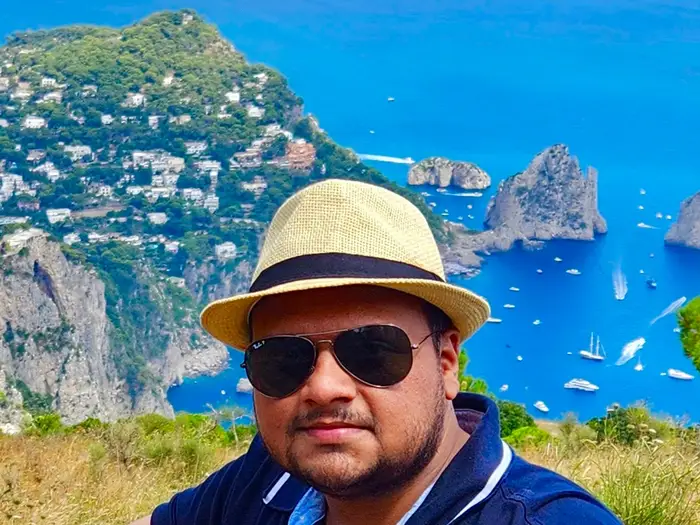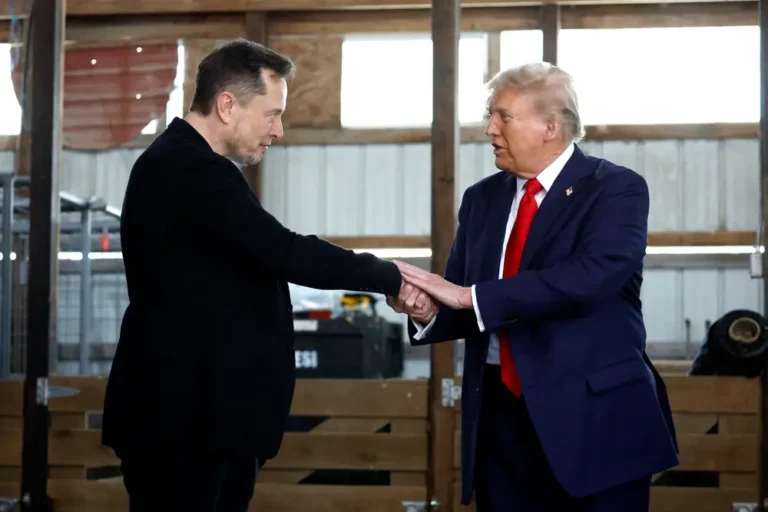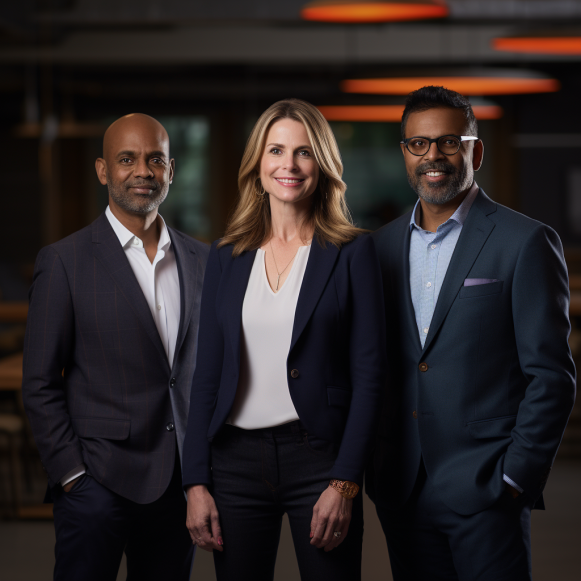Market-making giant Citadel Securities is rebuilding the tech that powers its trades as it eyes growth

Citadel Securities’ chief operating officer of technology, Jeff Maurone, and its chief technology officer, Josh Woods.
In 2023, Citadel Securities’ chief operating officer of technology, Jeff Maurone, met with senior leaders to discuss the year’s technology priorities. But what started as a standard strategy meeting resulted in a yearslong reevaluation and rebuild across the market maker’s entire technology stack.
Maurone said the meeting was a rallying cry for simplicity and walked away with an assignment he positioned like this: “Imagine if you were an airline,” he said, “could you, on one PowerPoint slide, show 10 to 15 systems that fit together simply and together represent the only systems needed to get all the way from selling a ticket to delivering the passenger.”
Now the market maker Ken Griffin founded is revamping its core trading infrastructure, which is the collection of systems and technologies that executes one in every four equity trades in the US.
Over the past year or two, Maurone and Josh Woods, Citadel Securities’ chief technology officer, have been strategizing to consolidate redundancies, mitigate operational complexities, and reduce the cost of trading and entering new businesses. They’re looking across the entire lifecycle of a trade as a blueprint for the rebuild.
Since its inception in 2002, Citadel Securities has used predictive analytics, data, and technology to allow buyers and sellers to trade assets by providing market liquidity. It uses algorithms to capture profit from small differences in prices. In the past two decades, the market maker has expanded the types of clients it works with, the products it trades, and the exchanges where it trades.
The goal is to prepare the firm for what lies ahead while delivering more resiliency and capabilities to clients today, Woods said.
“This is a way to, over time, keep your agility. I almost look at it as the stretching of business,” Woods told B-17. “If you don’t do these things, your technology stack eventually gets more rigid than you’d like, and then when you need to stretch, you’re unable to.”
Building Citadel Securities’ trading infrastructure of the future
In the past few years, Citadel Securities pushed into credit trading, expanded its rates franchise, and introduced an institutional options offering. It has scaled up its operations in the Asia-Pacific region and launched rates trading in Europe, the Middle East, and Africa; it is now active in more than 50 markets across 150 venues. As it grew, it developed a vast patchwork of technology solutions to meet its needs.
But as Citadel Securities looks to continue growing, it needs to position its technology to easily break into new markets, asset classes, and geographies. The firm aims to do that by re-architecting key systems in a standard, global way, Maurone said.
“Part of this is just evolving the technology and being able to take a step back with fresh eyes and say, ‘Well, now that we’ve built out a lot of these offerings across all these different markets with so many different types of counterparties, we just have a much bigger set of requirements that we’re looking at,'” Woods said. “And so how do we look at all those and try to find the patterns and the best way of operating?”
Take the diversity in exchanges, which vary dramatically in terms of fee structures, operating hours, and clearing requirements. Instead of relying on individual systems that cater to individual exchanges, the firm hopes to adapt its back-end systems to be flexible enough to accommodate many exchanges and onboard new ones efficiently.
Asset types are another area where there’s a lot of underlying variance, especially in terms of data structures. And differences in trading practices — from systematic to high touch — will require Citadel Securities to rethink those underlying systems.
Through several progressive changes to its tech stack, Maurone said he hoped that in 2025, the firm would be entirely trading in a system that reflects its goal to reduce operational complexity and redundancies.
“A lot of times, it requires reorienting how we look at the problem,” Woods said. “Before, you couldn’t really see the pattern because you’re only looking at one little slice of the problem, but now that you see it across all these different domains, it becomes clear that there’s more we can do.”
How product managers are bridging business and technology
Wall Street firms have long turned to consulting agencies, such as McKinsey or Deloitte, to shepherd tech execs and other C-suite leaders through a transformative process such as this. Instead, Citadel Securities has turned to an internal group of product managers and chief operating officers — some of whom spent years working at consulting firms — to oversee the vision and execution of its technology.
Building out this internal muscle, Maurone said, has filled a need that an external consultant never really could. “We need to live and breathe and own the strategy,” he said, adding that much of the software is created in-house. “You need the battle scars and the issues to shape the people who are building the solution,” he said.

Citadel Securities’ Maurone with his team members in his New York office.
Each business or function has a COO backed by a team and partners closely with their business head. The operation is overseen by the firmwide COO, Matt Culek, who works closely with CEO Peng Zhao and the firm’s president, Jim Esposito, on the firm’s most challenging issues.
Maurone’s team supports Citadel Securities’ technology organization, and he manages a team of 15 people. They set metrics, ensure engineers meet their delivery goals, and integrate customer feedback.
Maurone, the first person with a product-management background hired within the technology organization at Citadel Securities, five years ago, has been slowly building out this team of product managers.
“Quite often, people in Jeff’s org are thinking about the fundamental business problem we have,” Woods said.
“They have a lot of impact and have on multiple occasions reshaped what we end up building, which is very different than what you’d get if somebody was just looking at the requirements” and following orders, he added.






